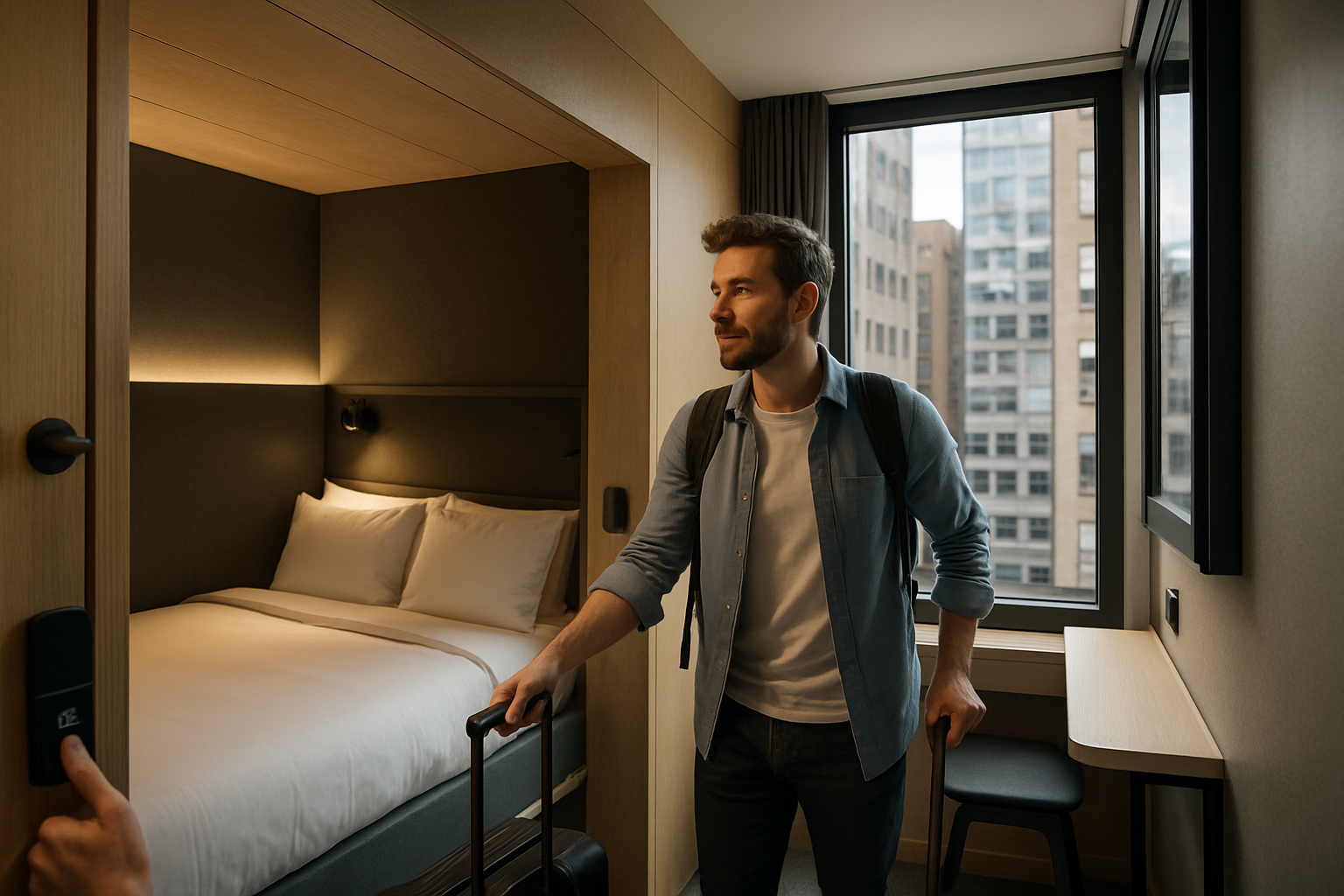Embracing the Charm of Microhotel Living: A New Era in Urban Travel
Welcome to the world of microhotels, where compact luxury meets urban adventure. This innovative hospitality trend is redefining city stays, offering travelers a unique blend of efficiency, style, and local immersion. Join us as we explore the rise of microhotels and discover why they're becoming the go-to choice for modern urban explorers.

However, today’s microhotels have evolved far beyond their utilitarian predecessors. They blend smart design, cutting-edge technology, and a keen focus on local culture to create spaces that are both functional and inspiring. From New York to London, Tokyo to Amsterdam, these pint-sized properties are popping up in prime locations, offering travelers a chance to stay in the heart of the action without breaking the bank.
Design Marvels: Making the Most of Minimal Space
The hallmark of microhotels is their ingenious use of space. Rooms typically range from 50 to 200 square feet, challenging designers to create multifunctional spaces that feel anything but cramped. Fold-down desks, hidden storage compartments, and modular furniture are common features. Some rooms even boast transformable layouts, with beds that tuck away into walls during the day to create living areas.
But small doesn’t mean spartan. Many microhotels prioritize high-quality materials and stylish finishes, creating a luxurious feel despite the limited square footage. Think plush bedding, rainfall showers, and smart TVs that double as digital art displays. The goal is to provide everything a traveler needs and nothing they don’t, resulting in spaces that are both efficient and indulgent.
Tech-Forward Stays: Enhancing the Guest Experience
Technology plays a crucial role in the microhotel experience, streamlining operations and enhancing guest comfort. Mobile check-in and keyless entry are standard, allowing guests to bypass the front desk entirely if they choose. In-room tablets control everything from lighting and temperature to room service orders and local recommendations.
Some microhotels are pushing the tech envelope even further. The Yotel brand, for example, features robotic luggage storage systems in some properties, while CitizenM hotels use AI to personalize room settings based on guest preferences. These high-tech touches not only improve efficiency but also add an element of novelty to the stay, appealing to tech-savvy travelers.
Community Spaces: Where Microhotel Magic Happens
While guest rooms may be compact, microhotels more than make up for it with expansive and vibrant communal areas. These spaces serve multiple functions: lobby, workspace, bar, restaurant, and social hub. Designed to encourage interaction, they often feature long communal tables, cozy nooks, and flexible seating arrangements.
Many microhotels curate regular events in these spaces, from mixology classes to local art exhibitions, creating opportunities for guests to mingle and engage with the local culture. This focus on community and shared experiences sets microhotels apart from traditional accommodations, appealing to travelers who value connection and authenticity over spacious rooms.
Local Immersion: Microhotels as Gateways to the City
One of the biggest draws of microhotels is their deep connection to their surroundings. Often located in trendy neighborhoods or up-and-coming areas, these properties serve as gateways to authentic local experiences. Staff members are typically well-versed in the area’s hidden gems, offering personalized recommendations that go beyond typical tourist attractions.
Many microhotels partner with local businesses, artists, and artisans to bring the essence of the city into the property. From locally sourced snacks in the mini-bar to neighborhood tours led by long-time residents, these collaborations provide guests with a truly immersive stay. Some properties even feature rotating art installations or pop-up shops showcasing local talent, further blurring the lines between hotel and community hub.
The Future of Urban Hospitality: Challenges and Opportunities
As microhotels gain popularity, they face both challenges and opportunities. Critics argue that the small room sizes may not suit all travelers, particularly those on extended stays or families. There’s also the question of whether the novelty will wear off as more properties enter the market.
However, proponents see microhotels as part of a larger shift towards more sustainable and community-oriented travel. By maximizing space efficiency and encouraging guests to spend time exploring the city, these properties align well with growing concerns about overtourism and environmental impact.
Microhotel Must-Knows: Tips for Maximizing Your Stay
• Pack light: With limited storage space, streamlined luggage is key
• Embrace the communal areas: They’re an extension of your room
• Take advantage of staff knowledge for local recommendations
• Use in-room tech features to customize your environment
• Book early: Popular microhotels fill up fast, especially during peak seasons
As urban travel continues to evolve, microhotels stand at the forefront of innovation in hospitality. By offering affordable luxury, cutting-edge design, and authentic local experiences, these compact accommodations are changing the way we experience cities. Whether you’re a budget-conscious traveler, a tech enthusiast, or simply someone looking for a unique stay, microhotels offer a fresh perspective on urban exploration. As this trend continues to grow, it’s clear that sometimes, less really is more.





